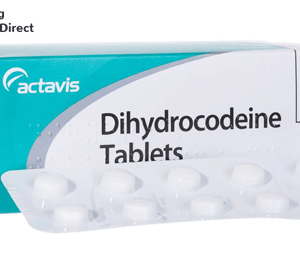
5 Types of Left Sided Headaches and When to Seek Help
Headaches can occur for various reasons and a vast majority of adults over the age of 18 years have had a headache over the past year. The World Health Organization states that three in four adults over the age of 18 have had a headache over the last year, showing the commonality of this health condition. In addition, the WHO suggests that a third of people who have had headaches reported they had migraines.
In a general sense, headaches cause pain in the head, eyes, and forehead areas, depending on the source. However, when headaches are persistent and predominantly on the left side of the head and face, this could give potential cues into the type of headache and its potential severity.
The information ahead is a complete list of the types of headaches that can occur on the left side along with common symptoms. In addition, information on how or when to seek testing and further care is suggested.
5 Left Sided Headaches and Common Symptoms to Expect
1. Cluster Headaches
Considered to be not very common, cluster headaches are caused by a rare disorder and can cause potentially the worst pain out of the headaches listed. This type of headache comes and goes and is often accompanied by periods of attacks followed by pain-free moments (months). In addition, cluster headaches come every other day, can last up to three hours, and typically present the same time of the day. Common signs and symptoms of cluster headaches include the following:
o Severe pain at or around the eye
o Pain on one side of the face
o Increased tear production
o Clogged nose on one side of face
o One-sided eyelid drooping
o Swelling around the eye
While exact symptoms for each person might vary, it is important to document when each one occurs, where the pain is felt, and for how long it lasts. If you need to seek help, having details about your headaches can be very helpful in determining the type.
2. Migraine Headaches
Considered to be a neurologic condition, migraines are the most common condition to affect the brain and nervous system. These types of headaches can last anywhere from a few hours to a few days depending on the pain. Commonly, it is felt on one side of the face and can have an affect on the eyes. Some common symptoms to look out for when a migraine comes includes:
o Nausea
o Vomiting
o Sensitivity to light
o Dizziness and unsteadiness
o Poor or disrupted vision in one eye
When a migraine attack happens, it can be quite devastating and cause the person to remain in a dark room for hours until some symptoms subside. For more chronic migraine symptoms, some adults may need medication to reduce the longevity of pain. For others, testing might be needed to determine the cause.
3. Cervicogenic Headaches
This type of headache is due to a physical injury to the neck area, hence the name cervicogenic. This type of headache occurs when pain is referred to the head from the neck and can generate dull and achy sensations. When injury occurs in the neck area, cervicogenic headache symptoms can include:
o Pain in the head that ranges from a dull ache to severe pain
o Limited head and neck mobility
o Blurry vision in one eye
o Pain at the injury site in addition to headache
o Nausea
o Sensitivity to light or sound
o Dizziness
The symptoms of a cervicogenic headache are similar to common tension and migraine headaches, which underscores the importance of getting the proper testing if necessary.
4. Vasculitis-Related Headaches
This type of headache can be a serious condition depending on how it presents itself. Vasculitis is inflammation of blood vessels and can cause pain or reduced blood flow to a particular area of the body.
However, central nervous system vasculitis is a condition which affects the blood vessels of the brain or spine and can occur in the setting of rheumatoid arthritis, sarcoidosis, systemic lupus, or infection. Symptoms of vasculitis headaches include:
o Severe long-lasting headaches
o Stroke or mini stroke
o Generalized confusion
o Weakness
o Seizures
o Vision problems
If central nervous system vasculitis occurs, it is important to seek help to get the proper treatment. The symptoms that come with this condition could be serious and should be a reason to visit a healthcare provider.
5. Brain Aneurysm.
Perhaps the most serious headache from this list is the brain aneurysm. A brain aneurysm is a condition in which a blood vessel in the brain expands and becomes enlarged, which generally does not cause symptoms. When the brain aneurysm doesn’t rupture, it can cause headaches, pain near the eye, weakness and numbness on one side of the face, and difficulty with walking and talking. However, when the aneurysm ruptures, this can cause severe pain and can become a medical emergency. Consider the symptoms of a rupture below:
o Stiff neck or pain
o Sensitivity to light
o Blurry and/or double vision
o Confusion and possibly loss of consciousness
o Seizure
o Severe sudden headache
When to See a Doctor for a Left Sided Headache
While it is not always necessary to see a healthcare provider because of a generalized headache, there are some important factors to consider prior to seeking help. The first factor is to consider the amount of pain that comes with the headache. Chances are if you have severe pain, or severe enough to disrupt your daily life, then you should get it checked out. Secondly, consider the duration of the headache, or if it has been around for days without any resolution. If this is the case, further examination and testing may be needed to determine why the headache persists.
In addition, it is important to note when a headache causes nausea, vomiting, dizziness, or one-sided body weakness, as these can be serious signs to get treated. Prevention of headaches is typically easier once the triggers are determined, which could mean a formal diagnosis from your doctor. Lastly, a proper diet, adequate exercise, and stress reduction techniques might play a role in regulating headaches.
https://www.who.int/news-room/fact-sheets/detail/headache-disorders#:~:text=Half%20to%20three%20quarters%20of,of%20the%20world's%20adult%20population.
https://thejournalofheadacheandpain.biomedcentral.com/articles/10.1186/s10194-017-0785-3#:~:text=Cluster%20headache%20is%20a%20relatively,most%20severe%20forms%20of%20pain.
https://www.mayoclinic.org/diseases-conditions/cluster-headache/symptoms-causes/syc-20352080
https://migraine.com/migraine-statistics
https://www.spine-health.com/conditions/neck-pain/what-cervicogenic-headache#:~:text=Cervicogenic%20headache%20(CGH)%20occurs%20when,head%2C%20and%2For%20face.
https://my.clevelandclinic.org/health/diseases/13205-central-nervous-system-vasculitis
https://www.nhs.uk/conditions/brain-aneurysm/symptoms/











